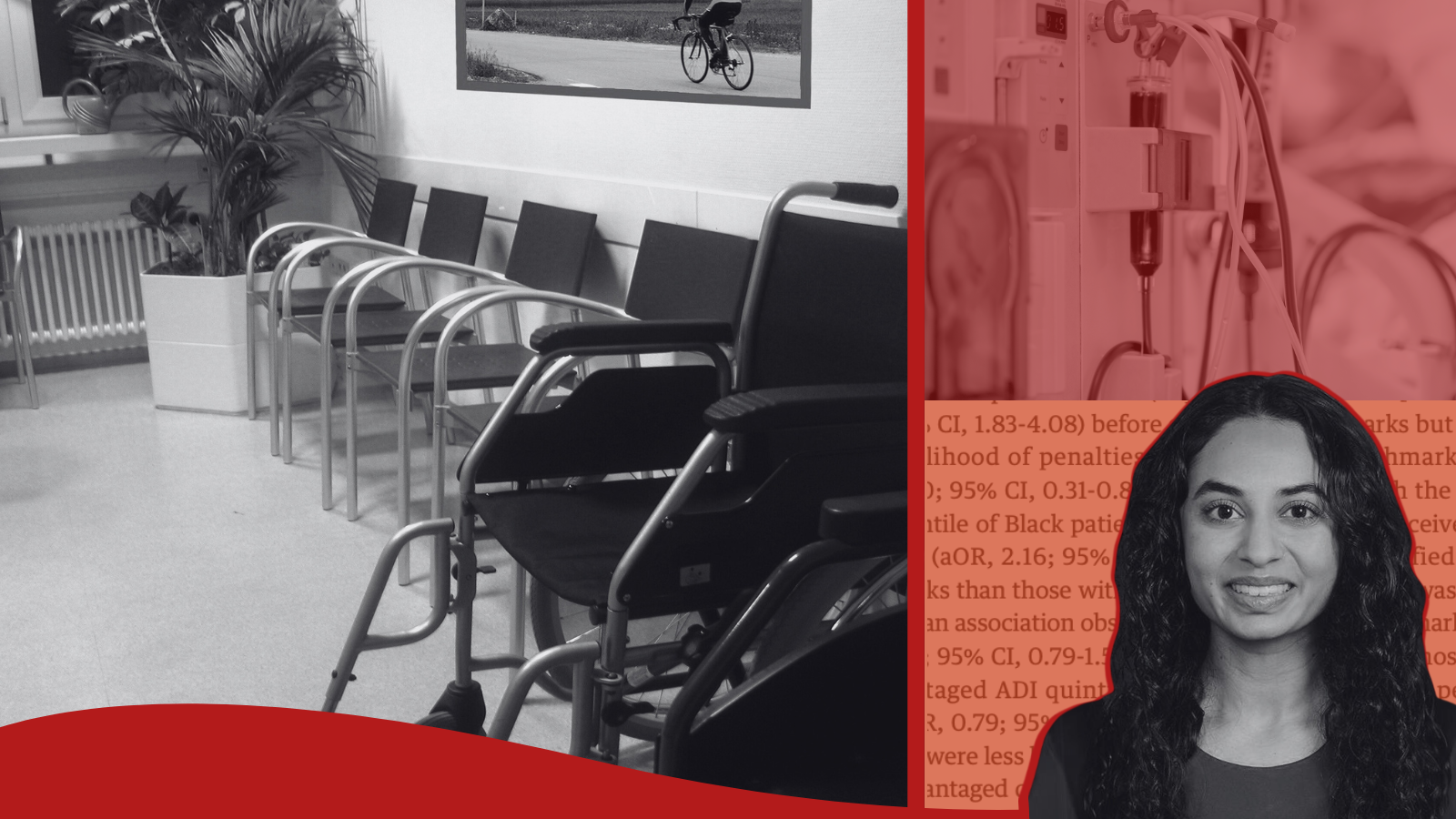
End-stage renal disease (ESRD) is a debilitating condition that affects over 800,000 people in the US and accounts for seven percent of Medicare spending. The Centers for Medicare & Medicaid Services’ ESRD Treatment Choices (ETC) model is a pay-for-performance program incentivizing home dialysis and kidney transplant, which are lower-cost therapies than in-center hemodialysis. Given that low-income patients are less likely to use home dialysis or receive a kidney transplant, the ETC Model implemented novel incentives to address socioeconomic differences in care.
When the program was initiated in 2021, dialysis facilities serving higher proportions of patients with social risk factors were more likely to receive penalties. In 2022, the ETC model implemented stratified benchmarks, whereby groups of dialysis facilities with higher (>50 percent) versus lower (<50 percent) proportions of patients dually eligible for Medicare and Medicaid or low-income subsidy recipients are graded on different benchmarks.
A research letter in JAMA from Dr. Sri Lekha Tummalapalli, assistant professor of population health sciences, graduates of the MS in Health Policy and Economics program, and colleagues evaluated the effects of these benchmarks.
Researchers found that among 2259 dialysis facilities, the percentage of facilities receiving penalties increased from 13.8 percent in 2021 to 20.7 percent in 2022. The percentage of facilities receiving penalties increased among for-profit and nonprofit facilities, large and small facilities, and those serving the highest versus lowest quintiles of Hispanic patients. However, penalties did not increase for dialysis facilities serving greater proportions of low-income or Black patients after implementation of stratified benchmarks.
“We found that these new incentives were successful in mitigating financial penalties to dialysis facilities serving more low-income patients,” explained Dr. Tummalapalli. “This may be a promising policy strategy to ensure that safety-net providers are equipped with adequate resources to optimally serve their patients.”
- Highlights

